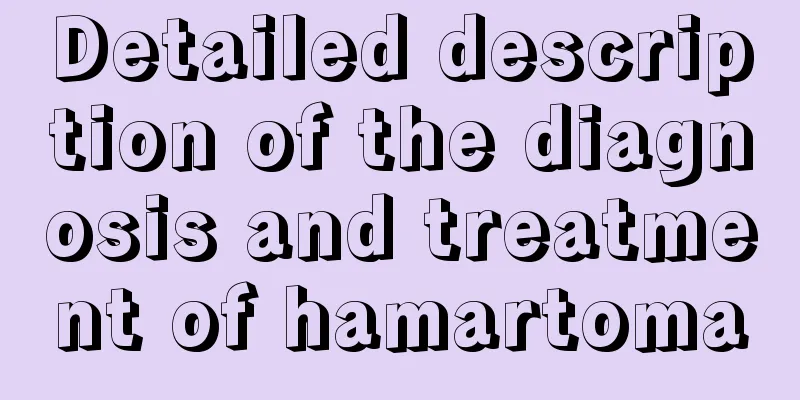Detailed description of the diagnosis and treatment of hamartoma

|
Nowadays, there are still many people who basically do not have physical examinations due to their conditions. They do not know when hamartoma appears, and only realize the danger when it becomes serious, so they are very anxious. However, how to diagnose and treat hamartoma? Let us learn about the overview of hamartoma diagnosis and treatment. Diagnosis of renal hamartoma: The diagnosis of renal hamartoma is generally not difficult and can be confirmed by B-ultrasound, CT or MRI. Differential diagnosis of hamartoma: Malignant renal tumor: Renal hamartoma contains a large amount of adipose tissue. The difference in acoustic impedance between fat and surrounding tissue is very large, so it appears as a strong echo on B-ultrasound examination. However, renal cancer does not contain adipose tissue, so it appears as a low echo on B-ultrasound examination. However, sometimes we encounter atypical renal hamartoma with very little fat component, which makes it difficult to distinguish it from renal cancer. In the same principle, fat tissue shows low density on CT, and a negative CT value can be diagnosed as a hamartoma. However, hamartomas with little fat content are also difficult to distinguish from renal cancer under CT. In addition, MRI scanning is also a good method for diagnosing hamartomas. However, in clinical practice, for hamartomas with little fat content, it is often necessary to combine B-ultrasound, CT and MRI scanning to make a clear diagnosis. Principles of treatment of hamartoma: The treatment of renal hamartoma is mainly based on symptoms, tumor size, etc. 1. For asymptomatic tumors with a diameter of less than 4 cm, since the risk of spontaneous rupture is low, close observation and active monitoring of tumor size progression can be performed; 2. For hamartomas with a diameter of more than 4 cm, if the tumor is progressively enlarged or if the tumor is suspected to have a malignant tendency, surgical resection is recommended; 3. If the tumor is large and ruptures and bleeds, interventional embolization should be considered first, and then re-evaluated after the condition stabilizes, and a decision on surgical treatment should be made based on the situation. |
<<: A detailed review of the diagnosis and treatment of hamartoma
>>: The harm caused by glioma to the human body
Recommend
Playing basketball can increase height
For many young people, they regret not working ha...
Can early stage bone cancer be completely cured?
Can bone cancer be completely cured in the early ...
Rabies vaccination reaction, how to prevent it before it happens
After being bitten by an animal such as a dog in ...
What are the targeted drugs for nasopharyngeal carcinoma
What are the targeted drugs for nasopharyngeal ca...
Radiation-proof plants
Nowadays, many families use wifi and computers. I...
Can I take anti-inflammatory medicine if the bleeding hasn't stopped after wisdom tooth extraction?
We have all heard the saying, "Toothache is ...
Can salt water shrink pores?
Many female friends feel particularly distressed ...
How to tell if a woman has just finished having sex
It is very difficult to maintain a long-term rela...
What tests can confirm nasopharyngeal carcinoma in the early stage?
Nasopharyngeal carcinoma can be diagnosed in its ...
Is it better to take a walk before or after a meal?
Walking is a very effective way to lose weight an...
How much water can cause poisoning if you drink it at one time
When a person has a cold or fever or a woman has ...
Why is hair loss so severe
The problem of hair loss causes great trouble to ...
How to remedy excessive softening of hair
Many people soften their hair excessively for the...
What should you pay attention to in your diet after lung cancer surgery? Summary of dietary knowledge after lung cancer surgery
Lung cancer patients should eat a light diet and ...
Is the recurrence rate of stage 2 endometrial cancer high?
Endometrial cancer is a common gynecological mali...









